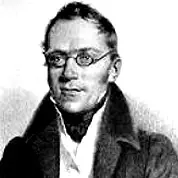Opus 299 No 9 in Eb Major by Carl Czerny (1791-1857)
 Carl Czerny was an Austrian pianist, composer and teacher. He is best remembered today for his books of études for the piano. Czerny’s music was profoundly influenced by his teachers, Muzio Clementi, Johann Nepomuk Hummel, Antonio Salieri and Ludwig van Beethoven. |



Notes
Romantic. Etude. Key of Eb. 4/4 Time Signature. 2 pages. 22 measures. Taken from Czerny for Guitar by David Patterson.
Upper Range
1) This is one of those studies where I must caution you to be careful! Be aware of your hands and body. It will take some time to work out and develop the gymnastics here. Don’t stress your wrist or fingers by over-practicing or repeating passages over and over. Take some time to think about the larger movements the body has to make. For example, you may have to dip your shoulder way down once you are up beyond twelfth position. That’s Ok, but be sure to correct your body when you return to a lower position. The same is true of the wrist. You will have to bring our pretty far to reach those high notes, but find the point where you can return to the normal position. Don’t keep the wrist extended when you don’t have to.
2) Mind where your right hand plucks along the string. As you play up in higher positionsm you will have to move your right hand a bit further toward the bridge in order to avoid playing on the nodal point od the string. The node is at the halfway point along the string where the octave harmonic is located. To demostrate this, pluck an open string and, as you pluck it, slowly move your right hand towards the twelrth fret. You will notice the tone getting darker as you move to the left. When you reach the twelfth fret (the node), the sound is quite hollow. Now, if you fret a note, say a G at the third fret of the first string, you have shortened the string and moved the node beyond the eighth and ninth frets, the nodal points began to occur in the area where the right hand and staying to the right of the node, you will play on the node or even to the left of it. The notes will not speak as well and lack presence and richness of tone.
